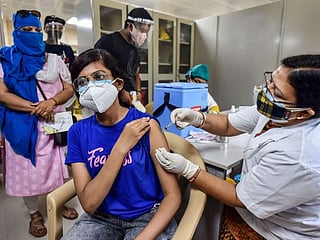COVID-19 second wave: Why India’s vaccine policy is a mess
Our population did not dramatically go up overnight, why wasn’t any of this planned?

We all know by now that India’s handling of the pandemic has been nothing short of a disaster. Many of the deaths we have seen could have been prevented if we had the right health infrastructure in place. The vaccination programme is the next big mess.
Bang in the middle of 2021, as the second wave of Covid rages throughout India, our vaccination drive has gone for a toss. Vaccine shortages are so widespread, that people who had scheduled dates for their doses are getting cancellation messages. States have been pleading for more vaccines for weeks now.
Desperate to salvage the situation, the Central government suddenly recommended a longer interval in between Covishield doses — up from 6 to 8 weeks to 12 to 16 weeks. It is another matter that the UK has been following a 12 week interval between the two shots after medical data supported greater efficacy with a 12 week gap. This was many months ago when the UK began its drive.
For some reason, India did not do the same. Now, as the variant that emerged in India threatens to wreak havoc in the UK, the British government has decided to bring the interval between two doses back down to 8 weeks so that more people are protected and fully vaccinated faster.
Confusion in India
To add the confusion in India, despite overwhelming accounts of people having been reinforced with Covid within 6 months of first getting it, the Indian government now says wait for 6 months to get your first shot if you’ve had Covid because immunity supposedly lasts 6 months. This is what the WHO had recommended as well but the US CDC advises waiting no longer than 3 months.
There is utter confusion and chaos over the vaccine policy, causing much concern in the minds of millions. The results are there for everyone to see. Less than 2 per cent of India’s population has been fully vaccinated until now and the vaccination drive has seen a sharp fall in recent weeks.
How did the pharmacy of the world come to this? It began with general hubris that India had overcome this pandemic, a premature declaration by the top leadership no less, that Covid had
been defeated. Then the obsession with a ‘self reliant’ India which lead to the government approving only two vaccines that are being made in India — Covaxin and Covishield — closing the door to imports. A complete over-centralisation of the vaccine procurement and distribution process followed.
States like Maharashtra which began seeing a surge, demanded they be given some flexibility on which age groups to vaccinate. The Centre kept insisting there was no vaccine shortage so states demanded it be opened up to more age groups.
Massive vaccine shortages
Faced with a growing Covid graph, the Centre announced a new vaccine policy in late April - suddenly opening up vaccinations to everyone above the age of 18 from the 1st of May, without explaining where the vaccines were going to come from.
Massive shortages were already being reported despite the Centre’s denials. One expert was quoted in a newspaper as saying that this amounted to “inviting 100 people for dinner when there was food for only 20”.
Earlier, the Centre was procuring vaccines and distributing them to states and now states, which had no say in procurement till now, were suddenly told to float global tenders on their own.
The Centre will receive only 50% of the vaccines directly from manufacturers and allocate this to states under various criteria. The rest have to be acquired by the states themselves or by private hospitals directly. Which means no free universal vaccination for all.
Several Chief Ministers have been openly critical of this policy, saying it has created more chaos, put a strain on the already strained finances of states. Experts have warned this will create more inequity in pricing and distribution of vaccines and amounts to an abdication from the Centre.
What is worse, the insistence on online registration for vaccination means many Indians who don’t have smartphones or aren’t well versed digitally, don’t have access to vaccines.
Authorities caught napping
Experts say procurement of vaccines should be centralised and its distribution decentralised. So what happened here? Were enough vaccines simply not ordered by the Centre when other countries started their drives late last year? Was the Indian government sleeping? Our population did not dramatically go up overnight, why wasn’t any of this planned and anticipated?
Now, faced with an acute crisis, the bold political claims of ‘self reliance’ or ‘athmanirbharta’ have been tossed aside and the government of India is in talks with Pfizer, Moderna, Johnson and Johnson and others to secure more vaccines. When they approached us earlier, we told them — no thanks.
The US support for a waiver on intellectual property rights on vaccines is an important step but this may take several months if not longer to materialise, with a consensus still eluding world bodies.
A report in the Times of India on May 15 says the government hopes to vaccinate all adult Indians by December. It quotes an unnamed government source, so that means deniability is very much there if this target doesn’t happen. If this is true, why doesn’t the government just come on the record? Because the truth is they don’t know how this will play out.
And sadly, for a country that has had an incredible record on mass vaccination drives, this mess with the Covid vaccines is inexplicable. One can only hope the tide will turn in the months ahead.
Sign up for the Daily Briefing
Get the latest news and updates straight to your inbox








